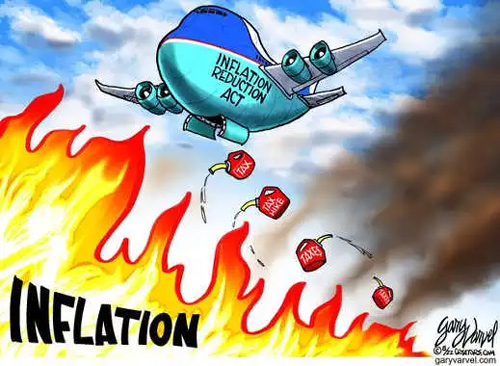U.S. government to pay an additional $1.1 TRILLION in interest for country’s debt over the next 10 years after Treasury yields jump
02/23/2024 / By Kevin Hughes

The U.S. government is about to pay more in interest for the country’s debt after Treasury yields jumped to highest levels in years. According to the latest report of the Congressional Budget Office (CBO), the U.S. government is expected to pay an extra $1.1 trillion in interest over the next 10 years.
Interest costs are on track to exceed defense this year as one of the biggest government expenses in the budget. Only Social Security and Medicare are expected to be larger burdens in the coming years.
The U.S. is expected to spend $870 billion, or 3.1 percent of gross domestic product (GDP), on interest payments this year. That is bigger than the proposed $842 billion budget for the Department of Defense (DoD) in fiscal year 2024. Based on CBO estimates, interest payments would require over $100 billion dollars more from the annual budget over the next decade. (Related: DEBT SURGE ALERT: $8.9T government debt to mature, $1.4T budget deficit expected in 2024.)
When the Wuhan coronavirus (COVID-19) pandemic sent rates to zero, it triggered a rise in borrowing that added to years of soaring federal debt.
The Department of the Treasury increased bond issuance to a record $23 trillion last year. The cost of paying for that has mounted as the Federal Reserve hiked interest rates to above five percent.
Investors now presume the U.S. government will run a constantly bigger deficit than it has in the past, putting pressure on the economy and financial markets. “The debt will become a problem, but it’s very hard to know exactly when,” said Campbell Harvey, director of research at Research Affiliates and a professor at Duke University‘s Fuqua School of Business.
U.S. government increases money by auctioning Treasury bonds to global investors
The U.S. government increases money by auctioning Treasury bonds to a band of global investors. The larger the deficit, the more bonds it must release to bankroll otherwise unfunded spending.
Eventually, greater borrowing costs on such matters as mortgages and corporate loans would slow the economy as consumer spending and business investment diminish. As interest costs grow, the government must release more debt to pay bondholders. That consequently raises spending on interest even further and raises issuance.
Federal debt held by the public is expected to rise from a record $26 trillion in 2023 to $48 trillion by 2034. “All else equal, a bigger government deficit means higher short-term and long-term interest rates. That means lower growth, and in theory, that means lower asset values as well,” said Lee Ferridge, chief of macro strategy for North America at State Street Global Markets.
Stocks and bonds slipped last summer when the Treasury Department told Wall Street it would release a huge amount of bonds. However, markets bounced back after the Treasury adjusted its borrowing plans to sell more short-term bonds and fewer longer-term ones.
Meanwhile, the U.S. national debt could surge by $19 trillion over the next decade to exceed the $54 trillion mark, owing to the rising costs of an aging population and higher interest expenses, according to the latest report by the CBO. The debt surpassed $34 trillion in December.
A major factor that will possibly lead to an added growth in the national debt is the sharp increase in the federal deficit, as stated by the CBO, which forecasts the yearly shortfall increasing to $2.6 trillion in 2034, up from $1.6 trillion this year, adding $18.9 trillion to the national debt during the decade.
Follow DebtBomb.news for more stories about America’s national debt.
Watch the video below about the U.S. debt skyrocketing out of control.
More related stories:
US national debt will continue to rise in the coming years, says IMF.
American economy running on FUMES as consumer debt binge reaches ominous and historic fever pitch.
Sources include:
Submit a correction >>
Tagged Under:
America, CBO, covid-19, Federal Reserve, financial markets, GDP, interest rates, national debt, pandemic, recession, reserve currency, Treasury Department, United States, US, Wall Street, Wuhan coronavirus
This article may contain statements that reflect the opinion of the author
RECENT NEWS & ARTICLES
COPYRIGHT © 2017 RISK NEWS



















